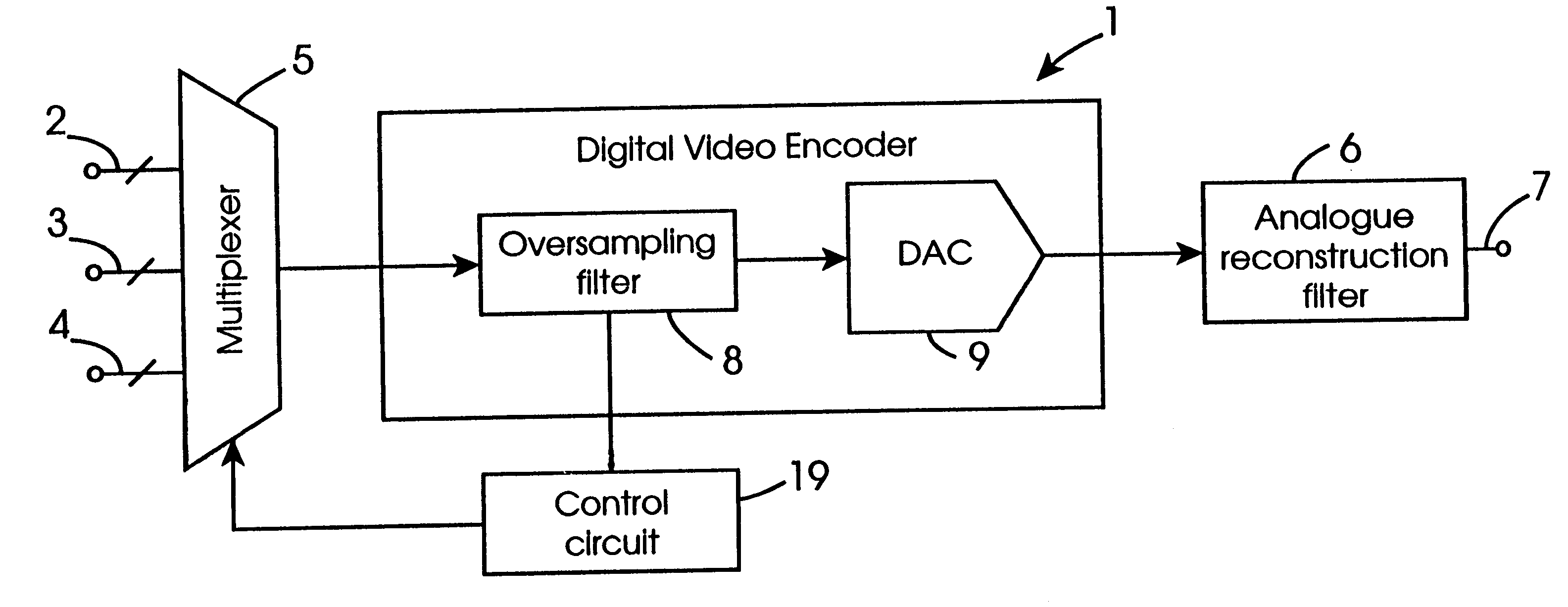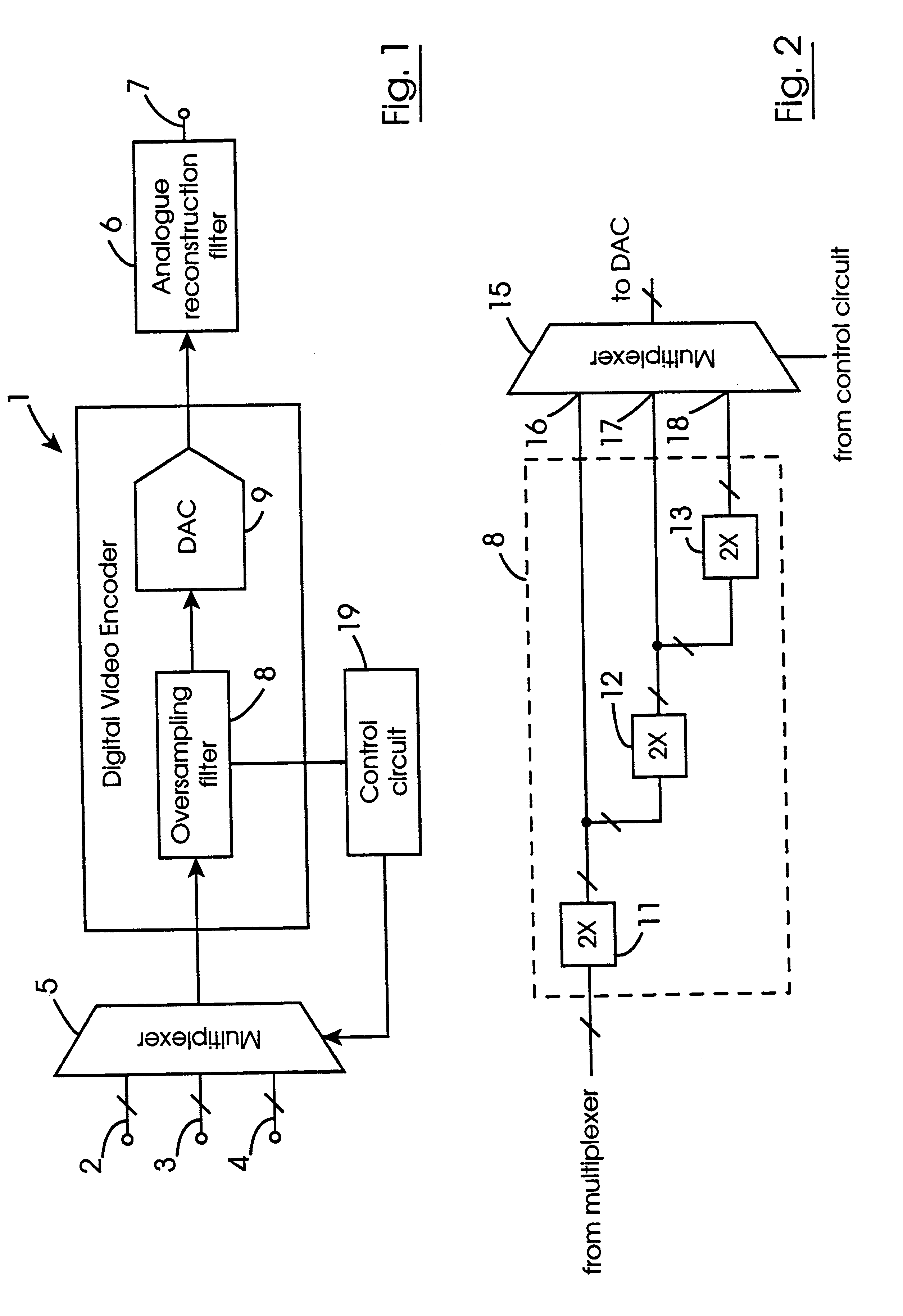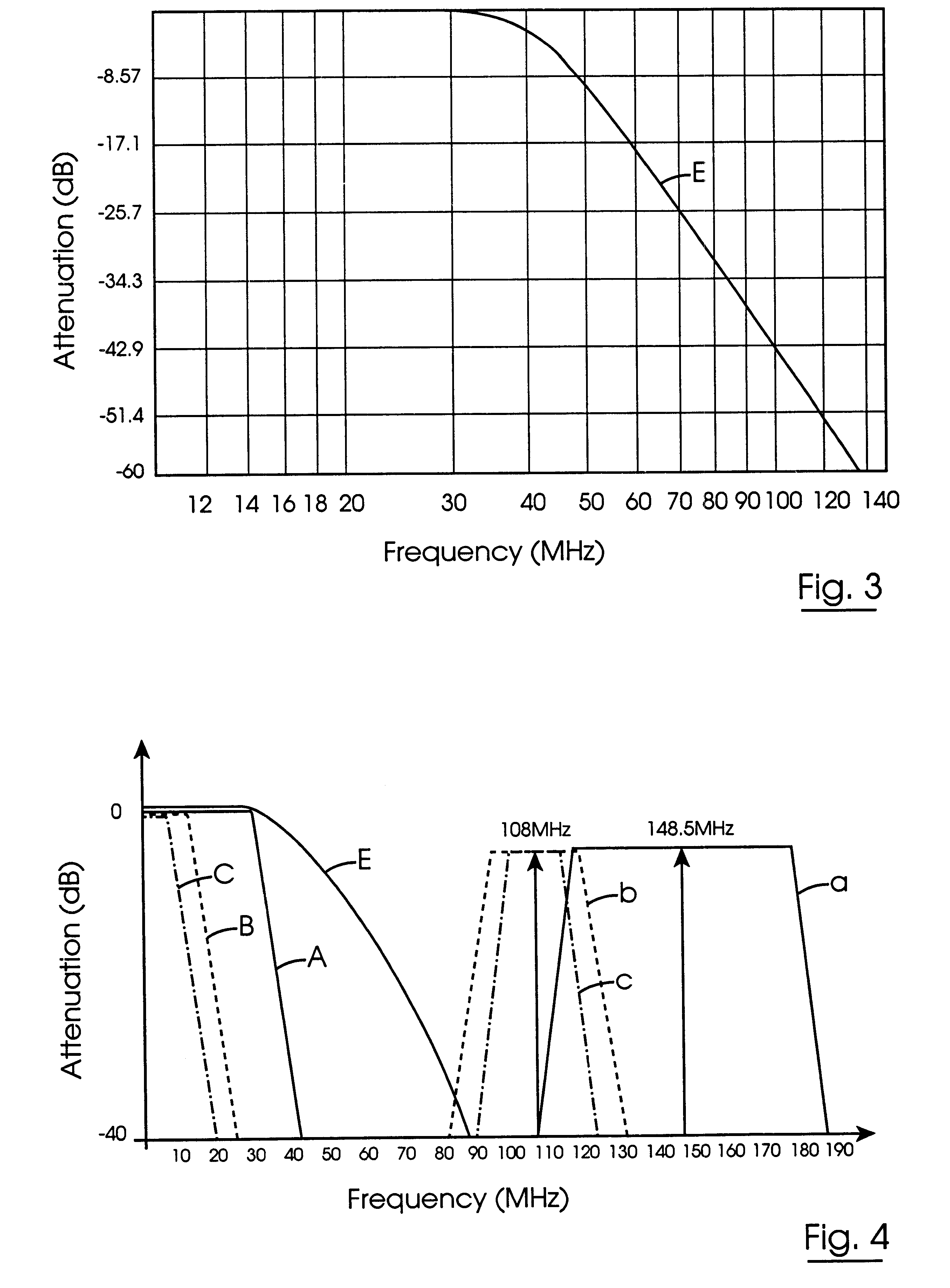Method for converting a plurality of signals from one of a digital and analogue form to the other form
a plurality of signals technology, applied in the field of converting a plurality of signals from one of a digital and analogue form to the other form, can solve the problems of increasing the pin count of the integrated circuit, requiring relatively complex analogue reconstruction filters, and requiring active components which are relatively complex, and thus expensiv
- Summary
- Abstract
- Description
- Claims
- Application Information
AI Technical Summary
Problems solved by technology
Method used
Image
Examples
Embodiment Construction
Referring to the drawings and initially to FIGS. 1 to 4 thereof, there is illustrated a block representation of a converter circuit indicated generally by the reference numeral 1, for carrying out a method according to the invention for converting a plurality of signals of different band widths from one of digital and analogue form to the other of the digital and analogue form. In this embodiment of the invention the converter circuit 1 is a digital to analogue converter circuit 1 for encoding and converting digital video data signals of three different formats, namely, standard definition format, progressive scan format and high definition format to analogue form. The standard definition format video data signals are applied on a first bus 2, and are of band width of 6 MHz. The progressive scan format video data signals are applied on a second bus 3, and are of band width of 12 MHz, while the high definition format video data signals are applied on a third bus 4, and are of band wi...
PUM
 Login to View More
Login to View More Abstract
Description
Claims
Application Information
 Login to View More
Login to View More - R&D
- Intellectual Property
- Life Sciences
- Materials
- Tech Scout
- Unparalleled Data Quality
- Higher Quality Content
- 60% Fewer Hallucinations
Browse by: Latest US Patents, China's latest patents, Technical Efficacy Thesaurus, Application Domain, Technology Topic, Popular Technical Reports.
© 2025 PatSnap. All rights reserved.Legal|Privacy policy|Modern Slavery Act Transparency Statement|Sitemap|About US| Contact US: help@patsnap.com



